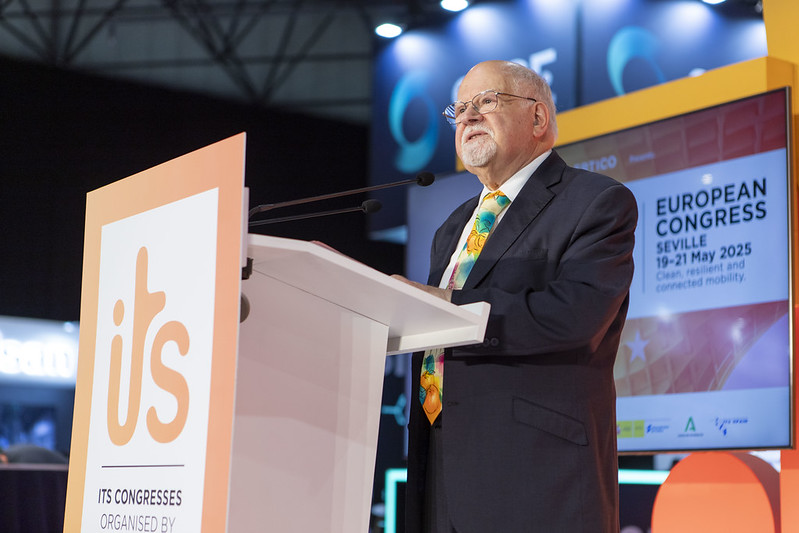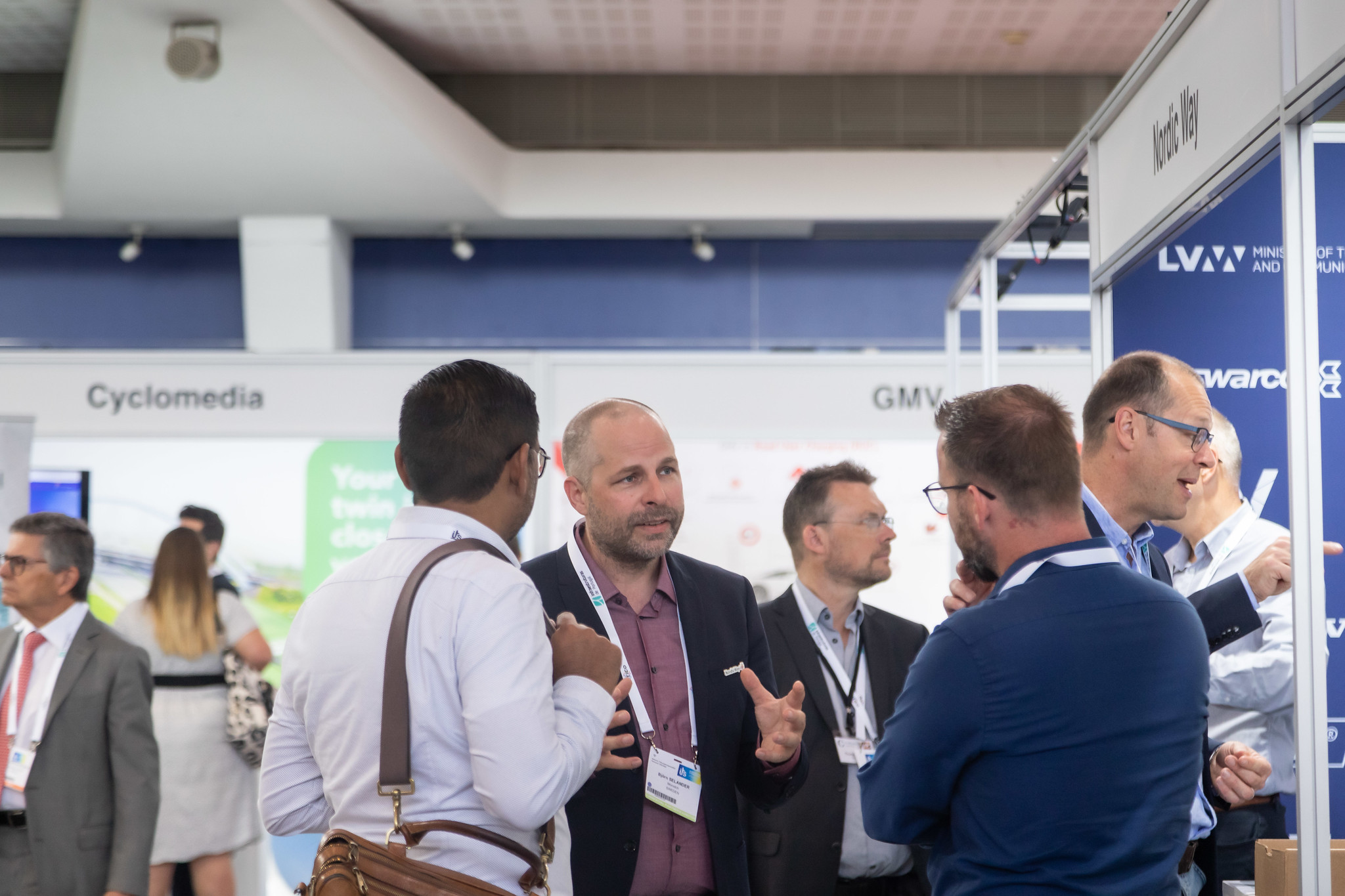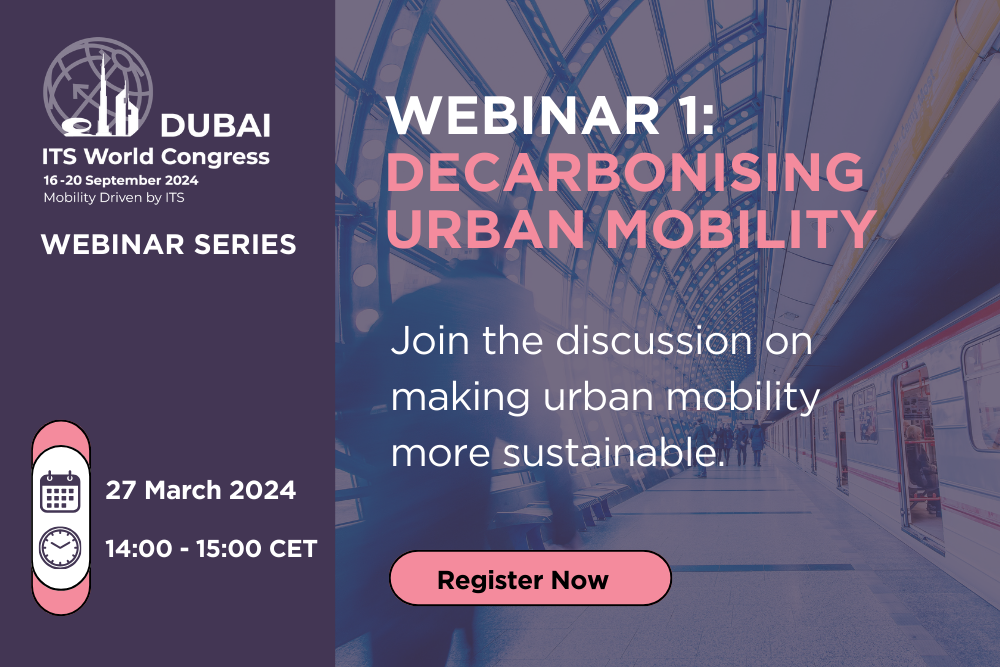The 15th ITS European Congress in Lisbon underlined significant strides in future transportation and smart mobility. In his closing remarks, Professor Eric Sampson CBE, Chief Rapporteur, reflected on the intensive week and its discussions, “I cannot summarise all under three hours, but I can paint a picture of what has happened under each of the five main topics with the help of the terrific team of rapporteurs who have been my ubiquitous eyes and ears”.
The topic of Cooperative, Connected, and Automated Mobility (CCAM) saw the most contributions with the highest number of papers and sessions. Connectivity and automation-related matters were presented and discussed from various angles in addition to cooperative ITS (C-ITS) services which focused on implementing long-term benefits. Most technical papers examined trials of familiar systems whilst some new ideas were introduced, including linking vehicle platooning to traffic management and collision alerts; using cloud computing in last-mile electric automated shuttles. This topic is growing rapidly as the connected services portfolio expands and technologies become more prominent than in previous Congresses.
Digitalisation and the data value chain emerged as decidedly popular topics emphasising issues around centring data provision, sharing, and exchange. A common denominator in the discussions reflected the problems of incentives and learning how to share data and information for the common good without jeopardising the functioning of markets. Additionally, National Access Points (NAPs) were featured in several sessions, linking to the common European mobility data space where trust and cooperation among stakeholders were identified as crucial for successful data-sharing initiatives. A clear need for cross-border interoperability and mutual trust was identified as a success factor, for which cooperation and sharing resources and best practices are key.
Freight and logistics was the busiest topic with two core themes: Digital logistics platforms and reducing delivery chain costs. The use of digital twins for last-mile logistics and the economic benefits of autonomous trucking were featured prominently. There was also a sobering look at how ITS and logistics can aid areas of geopolitical turmoil with examples of ITS as a game-changing tool in Ukraine. Other debates on the use of public transport for freight movement focused on low-carbon footprints for last-mile deliveries to create shared value. A development on the horizon is supplying freight data via an electronic Freight Transport Information platform – a topic we are sure to see in future Congresses.
The Future Traffic Management topic emphasised the need for carbon reduction, improved urban travel, and enhanced road safety. Another popular topic during the three days in which digital technologies were again identified as key to improving road safety, efficiency, and environmental protection whilst contributing to social and economic development. C-ITS hold the potential to facilitate smoother and safer transport for road users and authorities’ high-quality information, but data access and availability have become an important element again. On this point, strengthening cooperation is key for future traffic management by increasing the interaction between road authorities, traffic managers, service providers, fleet managers, vehicle manufacturers and infrastructure operators.
New mobility services, the fifth and final topic, held a mix of innovative ideas and schemes for more user-centric mobility solutions. Many paper presentations looked at how to create incentives for people to take up new mobility solutions in addition to the broader thinking on what activities can be used as blueprints. There were busy sessions on real-time mobility data sharing and the benefits from initiatives, such as the ITS Directive and the common European mobility data space. The potential for Mobility-as-a-Service has been a hot topic for many years but looking ahead, what are the expectations of citizens, Governments, and the private sector? Is the technology ready for a seamless journey and switching modes? Is MaaS a future-ready solution awaiting a future-ready culture?
The 2023 Lisbon Congress reaffirmed the potential of ITS to deliver mobility that is accessible, equitable, affordable, resilient, green and more sustainable throughout Europe. The technologies are advancing while policies are still developing and catching up, even though this is a long process and decisions are still lagging behind. Through a clearer political drive, there is a higher potential to reach goals: zero fatalities and zero emissions. The problems remaining await the perfect solution or the willingness to adapt user behaviours. This message was shared with everyone during the closing ceremony, and as Congress Chief Rapporteur for the last time, Professor Sampson called for action, “The message to all of us is that we need to change – NOW. I live in a farming area in N Yorkshire where there’s a saying – Don’t wait for the storm to pass – learn to work in the rain.”
The final Congress Report will be available by the end of July.
The post Final remarks of Lisbon: Game-changing directions across the ITS Community appeared first on itseuropeancongress.com.




